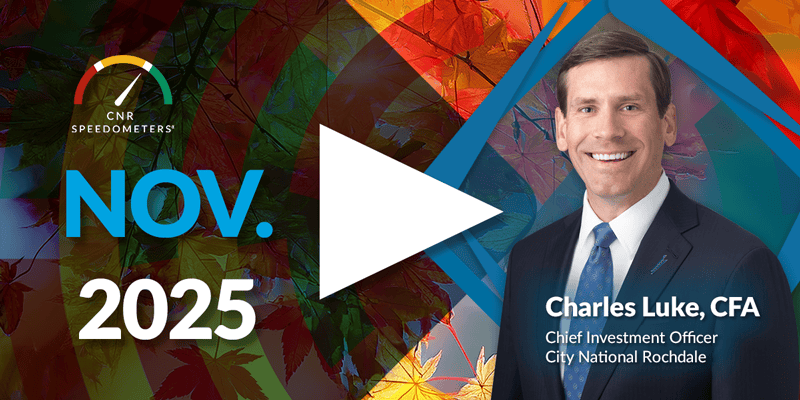-
Market Perspectives
Next Steps
August 2023
TRANSCRIPT
Let’s take a quick look at the markets, the recent move in the treasury curve, and the economic outlook.
We cautioned last month that the S&P500 had reached levels where we thought a pause or pullback was likely. So far in August, that script is playing out as the broad market is down over 4% month-to-date. Still, year-to-date S&P500 returns are in the mid-teens.
We’ve witnessed an August pause in many asset classes, and while we are not surprised that the S&P500 and the NASDAQ have pulled back, we are a little surprised that the year-to-date relative laggards have pulled back more. Small cap, value, dividend stocks, international, emerging markets — all are having a tougher month than the S&P500.
Reasons for the pullback in equities?
- Leading indicator weakness suggests a mild recession hasn’t been averted but rather deferred.
- Some of the tech-titans have rolled over after their strong run.
- Increased dispersion of earnings-per-share during the past earning season.
- Chinese economic weakness.
- And some good old-fashioned profit taking.
We are entering into a seasonally weak period, but we must note the rise in the 10-year treasury yield, perhaps the month’s more notable move.
A sell-off across the U.S. Treasury complex wiped out what was left of year-to-date gains, which, at one point, exceeded 4%. A month ago, the 10-year treasury yield sat at 3.85%, and as of filming, it is about 4.2%.
There are a confluence of factors driving the yield on the 10-year higher, leaving investors uneasy. Fed expectations remain hawkish, economic growth is surprising to the upside, and long-term inflation expectations are rising.
The past week, we saw notable strategists pile on as they stated the 10-year should be between 4.5% - 5%. Bond vigilantes are back. The U.S. economy continues to prove resilient, led by the consumer. The pace of U.S. retail sales increased in July above consensus expectations and will revise higher in May and June. The latest figures illustrate how a strong labor market paired with rising wages is giving many Americans the ability to spend on a variety of goods and services.
Consumers remain a key support to the U.S. economy, so far buttressing against recession in the face of higher interest rates.
Looking ahead, the consumer picture is less clear. On the one hand, rising delinquencies, high debt service costs, the erosion of pandemic era savings, and the resumption of student loan payments are looming threats for the main engine of the economy. Conversely, many Americans are finally seeing their wages rise faster than inflation, strengthening household purchasing power.
In short, the consumer’s resiliency may be tested over the coming months.
The Fed outlook is uncertain as well. Well noted is the divergence of opinions within the Fed regarding monetary policy next steps. Some strategists see another rate hike before year-end, but we’re not yet in that camp. We think the Fed’s next move will be predicated on future economic and inflation data.
Whether they hike one more time or not, we do think rates stay higher well into next year and that a rate cut is far off.
A mild recession is still in our forecast, and we expect market volatility over the coming months. Cautious portfolio positioning remains the call.
Stay Informed.
Get our Insights delivered straight to your inbox.
Check out previous perspectives:
Put our insights to work for you.
If you have a client with more than $1 million in investable assets and want to find out about the benefits of our intelligently personalized portfolio management, speak with an investment consultant near you today.
If you’re a high-net-worth client who's interested in adding an experienced investment manager to your financial team, learn more about working with us here.



